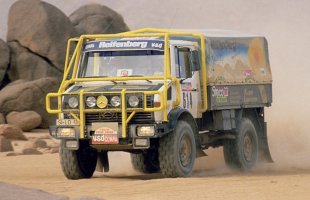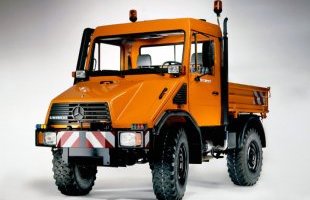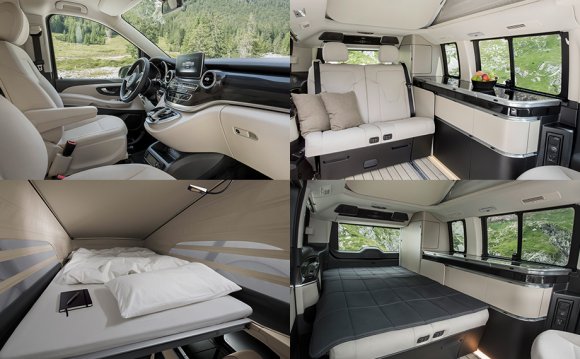
Mercedes Blenz House On Wheels
 Seventy years ago, in October 1946, the first test trip to the prototype was carried out by the everywhere, subsequently known as Mercedes-Benz Unimog. In this regard, the site has prepared a collection of photographs of various versions of the Unimogov.
Seventy years ago, in October 1946, the first test trip to the prototype was carried out by the everywhere, subsequently known as Mercedes-Benz Unimog. In this regard, the site has prepared a collection of photographs of various versions of the Unimogov.
Work on a car, an army transporter for the carriage of personnel, was initiated by a Mercedesian engineer Albert Friedrich during the war. After the defeat of Fascist Germany, the project was " demilitarized " and " Unimo " became an agricultural omnibus. In the photo, the prototype of 1946.
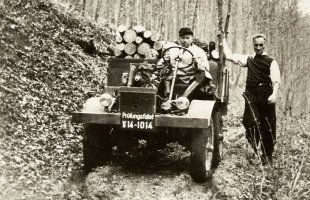 Car production started in 1947 at the Boehringer Company. The vehicle was equipped with a " Mercedesovian " Diesel OM636 with a capacity of 25 litres.
Car production started in 1947 at the Boehringer Company. The vehicle was equipped with a " Mercedesovian " Diesel OM636 with a capacity of 25 litres.
In 1951, the production was completely purchased by Mercedes and transferred to the company ' s plant in Gaggenau, in 1953 the car received a closed cab.
1955 Mercedes Benz Unimog S series 404 was primarily intended for Bundesver. Military versions have always been a significant part of the factory ' s production programme, now the Unimogi is in the army of eight dozen countries.
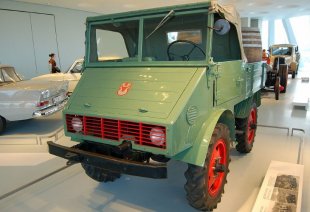 The new wholesale cab appeared in the 406/416 series, which arrived at the conjer in 1963.
The new wholesale cab appeared in the 406/416 series, which arrived at the conjer in 1963.
In 1974, a heavy 425 series of cars was started with a swallowed cabinet (moderated version used before 2006).
Prior to the Moscow Olympics of 1980, a half-century party from the Unimogows arrived in the Soviet Union for utilities.
In 1982, the French crew on Unimoga became the winner of the rally of Paris-Algeria-Dakar in the truck class.
Funmog of the 1984 specimen is an attempt to make a car of active rest with the exterior decor and the expensive separation of the salon.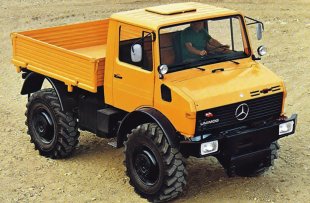 Twelve such machines were fired, each worth 150,000 German marks.
Twelve such machines were fired, each worth 150,000 German marks.
In 1992, new light series 408/418 cars were debuted and received a cab with a coated asymmetric hood.
A house on wheels on a three-axle full-water Mercedes-Benz Unimog U2450 6 #215;6 sample 1993.
In 2000, Mercedes submitted a new generation of Unimoga, and in 2003 the production of machines was transferred from Gaggenau to the cargo plant of the company in the city of Vert-am-Rine.
" Unimage " in the performance of Zweiweg, capable of driving both conventional roads and rails: steel wheels act as guides and the torque is transferred to the tyre tracks.
The face of the car is spring suspensions with large strokes and bridges that can be rolled at 30 degrees on any side.

